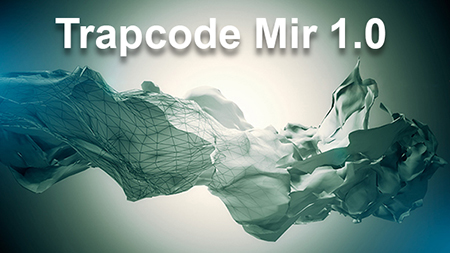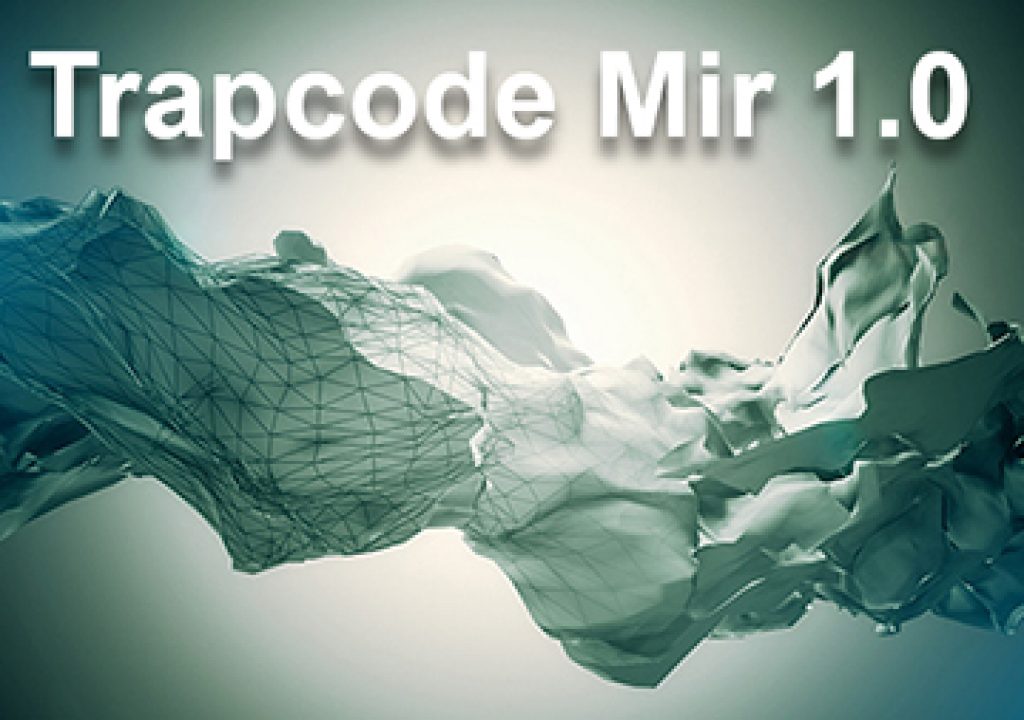
Trapcode Mir from Red Giant is a new 3D shape creating tool that works inside After Effects and utilizes OpenGL rendering for speed and efficiency. Mir allows you to transform a simple polygon mesh with fractal noise distortion, texture mapping, displacement and repeating geometry to create interesting motion graphics and animations. Integration with After Effects’ 3D lights, you can make smoothly shaded objects, landscapes, organic textures and elements and glowing nebulae.
How Mir Works
Mir is an effect that you apply to a solid layer in After Effects and uses a scaleable 3D mesh with a Perlin noise fractal for distortion and displacement. The mesh can be bent in both X & Y axis while the scale and amplitude of the Fractal will generate distortions like crumpled paper, cloth or mountainous terrain. There are numerous controls for varying complexity and distortions of the mesh, affects of the Fractal noise pattern and options for materials, textures, shaders and visibility (fog). You can apply surface maps to your mesh to create unique landscapes or textured objects/elements.
Trapcode Mir allows you to make interesting 3D shapes, terrains and animated objects
Trapcode Mir allows you to make interesting 3D shapes, terrains and animated objects
The best examples of what Mir can do will be found on the Red Giant website. This video by Mir developer Peder Norrby shows you a quick overview of the various options in Mir. Red Giant’s Aharon Rabinowitz gives a cool high-tech overview of amplitude mapping in this tutorial video.
Trapcode Mir also ships with 18 presets by Red Giant guru, Harry Frank to help get you up and running quickly. There is also a community of Red Giant users where you can share and exchange presets and projects at Red Giant People.
Manipulating the Mesh
Using Mir’s Geometry and Fractal controls, you can manipulate the shape of your object subtly or drastically and animate it on the Timeline. To speed up production you can reduce the number of polygons in the mesh to create your animation and then go back and increase the polygon count to smooth out before rendering the final piece. You can select a Density Phong, Flat Shader or make the wireframe visible or view as points or a mix of flat shading with polygon wireframe. Mir uses the 3D lights in After Effects – unlimited Ambient lights and up to 8 point lights. Spot lights will be treated like point lights inside of Mir.
There are numerous controls of the mesh in Mir
There are numerous controls of the mesh in Mir
However, since Mir does generate the 3D object in the Effects Control panel, it does not create a 3D element that interacts directly in 3D space with other 3D layers in After Effects. This means your Mir mesh won’t cast shadows or interact in volumetric 3D space with other 3D text, shapes or layers, nor will it render with the Raytracing capabilities in After Effects CS6.
Continued on next page…
Using Displacement Maps & Surface Maps
I experimented with some source materials I used a couple years ago on a Photoshop CS4 3D project, where I created both bump maps and surface maps taken from old B&W video footage of a JFK speech and wrapped it around a sphere to create my “Man in the Moon” animation.
Since I couldn’t create a complete sphere with the mesh in Mir, I did manage a good hemisphere and was still able to pull off the effect. I used Trapcode Particular for the starfield background.
Using the displacement map and specular (surface) map in Mir
Using the displacement map and specular (surface) map in Mir
Here’s a very short video of the rendered effect. I was very pleased at the material and texture controls and how the lights interact with the craters in the “moon”.
Overview
While Trapcode Mir utilizes OpenGL to speed things up, I was able to zip through my projects quickly. Downloading the example presets from the Red Giant People portal, you can see how the project was created and revers-engineer it and add your own twist. It’s a great way to get started with more complex project – but just clicking and exploring in Mir will keep you busy for quite awhile. I’ve never ended up with the same look twice and am creatively challenged by what I can create in Mir.
Trapcode Mir can be purchased separately for $99 from the Red Giant website or as part of the Trapcode Suite 12.0 for $899 which includes 10 products. You can download a free trial of Mir from the Red Giant website to check it out.
System Requirements:
Open GL: 2.1 or higher
VRAM: 512MB (minimum) 1GB (recommended)
Supported Video Cards: Nvidia and AMD.
Users with Intel GPUs may experience stability and performance issues when using Mir. Red Giant tests have shown that keeping the X and Y vertices settings at 50 or lower may help prevent some common stability issues on unsupported cards.
Mac OS 10.6 and 10.7 – After Effects CS4, CS5, CS5.5, CS6
Windows XP, Vista and Windows 7, 32-bit & 64-bit – After Effects CS4, CS5, CS5.5, CS6
____________________________________________________
Jeff Foster is a published author of several how-to books and training videos in the motion graphics, animation and video production industries and is an award-winning video producer and artist. Visit his web site to learn more about his training methods, tips & tricks at PixelPainter.com

